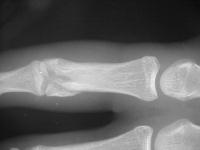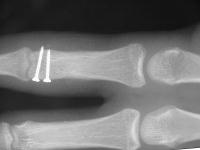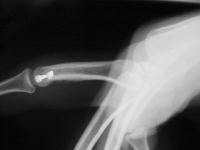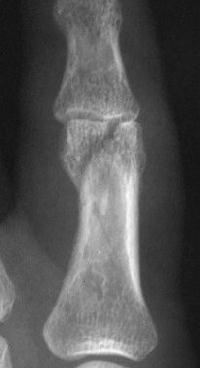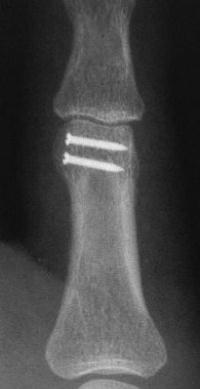Unicondylar fractures of
the phalangeal
head are common, frequently unstable and unacceptably displaced.
Although
some may be treated successfully with percutaneous reduction and
fixation,
many require open reduction. In these cases, the screws were put right
through the collateral ligament and sunk into the cortex. I think the
simplest
way to do this is to reduce and stabilize with two K wires, then remove
the wires and replace with screws, one at a time, so reduction is
maintained
throughout. 1mm=39/1000" Kwire, so doing the math, here is how you
choose the right sized Kwire to use as both drill and provisional
fixation:
| Screw (mm) |
Drill (mm) |
Kwire (mm) = Kwire (.001”) |
| 1.0 |
.76 |
.71 |
28 |
| 1.3 |
1.0 |
.89 |
35 |
| 1.5 |
1.1 |
1.1 |
45 |
| 2.0 |
1.5 |
1.4 |
54 |
| 2.4 |
1.8 |
1.6 |
62 |
With two screws,
bicortical fixation is not needed. The video below illustrates the
steps involved, which are the same with either open or percutaneous
fixation.
|

